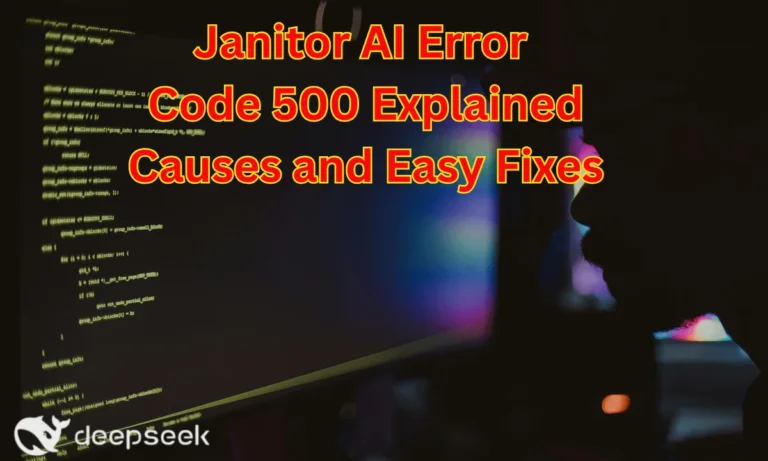Building Trust: How DeepSeek AI Ensures Transparency in Algorithms
Building Trust
Building Trust: In today’s digital world, artificial intelligence (AI) has become an essential driver of progress, shaping industries from healthcare to finance. However, alongside the rapid adoption of AI systems comes a critical challenge: trust. Many organizations and individuals hesitate to embrace AI fully because they worry about hidden biases, opaque decision-making, and the lack of clarity in algorithms. Recognizing this challenge, DeepSeek AI has placed transparency at the core of its development strategy. By ensuring that its algorithms remain explainable, fair, and accountable, DeepSeek AI is not only advancing technology but also building the trust that sustains long-term adoption.
AI and Misinformation: Combating Fake News in Pakistan
Why Transparency in AI Matters
AI systems are increasingly responsible for decisions that affect people’s lives—approving loans, recommending medical treatments, or filtering job applicants. Without transparency, these systems can become “black boxes,” making decisions that even their creators cannot fully explain. This lack of clarity creates multiple risks:
- Bias and Discrimination: Algorithms trained on incomplete or skewed datasets can unintentionally favor certain groups over others.
- Loss of Accountability: If decision-making remains hidden, users cannot challenge or appeal outcomes.
- Erosion of Public Trust: Communities and industries may reject AI systems if they do not understand how they function.
To address these issues, DeepSeek AI champions a model of openness, explainability, and fairness.
DeepSeek AI’s Commitment to Ethical AI Development
DeepSeek AI’s Commitment to Transparency
1. Explainable AI (XAI) Techniques
DeepSeek AI prioritizes explainability in its algorithmic design. Rather than producing opaque results, the company develops systems that provide clear reasoning behind every outcome. For instance, if a model recommends a medical treatment, it explains the key factors behind the suggestion—such as patient history or lab results. This ensures that users can verify and understand the logic.
2. Ethical Data Practices
Transparency begins with the data that fuels AI. DeepSeek AI emphasizes sourcing diverse, representative, and high-quality datasets. It also documents dataset origins, preprocessing methods, and limitations to ensure that developers and users alike can assess data reliability. By openly disclosing dataset handling, DeepSeek AI reduces the chances of hidden biases.
3. Model Documentation and Reporting
Every AI model built by DeepSeek is accompanied by model cards—structured documents that describe the model’s intended use cases, limitations, accuracy rates, and known biases. These reports help stakeholders understand where and how to apply the model responsibly. By publishing this information, DeepSeek AI sets a higher standard of accountability.
4. Human-in-the-Loop Oversight
Instead of fully replacing human decision-making, DeepSeek AI integrates human-in-the-loop systems. This approach allows experts to intervene, audit, and challenge algorithmic outputs. By blending automation with human judgment, DeepSeek ensures a balanced and transparent workflow that users can trust.
5. Open Research and Collaboration
DeepSeek AI actively publishes its research findings, algorithmic methods, and ethical guidelines in peer-reviewed forums and open-source repositories. This openness not only fosters trust but also invites external experts to evaluate, critique, and improve the company’s work.
Regulating AI: Should Pakistan Draft Its Own AI Laws?
Building Trust Across Industries
Transparency is not just a principle—it is a necessity when applying AI in sensitive domains. DeepSeek AI ensures its algorithms remain reliable in the following sectors:
- Healthcare: Doctors can see how diagnostic algorithms weigh different medical factors, empowering them to make informed treatment choices.
- Finance: Lenders gain insight into credit risk models, ensuring loan approvals or denials are justified and fair.
- Education: Teachers and policymakers understand how student performance analytics are calculated, preventing unfair evaluations.
- Public Governance: Citizens gain confidence in AI-based public service systems when processes are open and explainable.
By tailoring transparency efforts to each sector, DeepSeek AI ensures that its solutions foster confidence rather than suspicion.
AI and Mental Health: Ethical Implications of Emotional Recognition
Addressing the Challenge of Bias
Bias in AI is one of the most significant barriers to trust. DeepSeek AI tackles this challenge with a three-step strategy:
- Bias Detection: Automated tools scan datasets and outputs for signs of discrimination or imbalance.
- Bias Mitigation: Algorithms are retrained with improved datasets to minimize skewed outcomes.
- Continuous Monitoring: AI systems are regularly evaluated after deployment to catch and correct unintended biases.
Through this proactive approach, DeepSeek AI demonstrates that transparency is not a one-time task but an ongoing commitment.
The Dark Side of AI: Mitigating Risks for Pakistani Organizations
Transparency as a Path to Ethical AI
The conversation around AI ethics cannot exist without transparency. DeepSeek AI’s dedication to clear algorithms aligns with global AI governance principles, including the OECD AI Principles and the European Union’s AI Act. By complying with international standards, DeepSeek AI reassures stakeholders that its systems are both ethical and globally accountable.
Moreover, transparent algorithms empower end-users. When individuals understand how AI works, they feel empowered to trust its recommendations, challenge unfair outcomes, and participate in shaping future AI policies.
The Dark Side of AI: Mitigating Risks for Pakistani Organizations
Future Outlook: The Role of Transparent AI in Society
As AI adoption grows, transparency will remain central to public trust. DeepSeek AI envisions a future where every algorithm is as open as possible, with clear documentation, bias-check mechanisms, and accessible explanations for non-technical users. This vision will help bridge the gap between technology creators and society, ensuring that innovation benefits everyone fairly.
DeepSeek AI also aims to expand partnerships with policymakers, educators, and researchers to create a collective framework for transparent AI governance. By doing so, the company strengthens its position as a leader in responsible and ethical AI development.
AI Surveillance: Balancing Security and Privacy in Pakistan
Conclusion
Trust is the cornerstone of successful AI adoption, and transparency is the foundation of that trust. DeepSeek AI is setting itself apart by ensuring that its algorithms are not hidden behind black-box systems but are instead open, explainable, and accountable. From ethical data sourcing to explainable outputs and continuous monitoring, DeepSeek AI demonstrates that transparency is not just a feature—it is a philosophy.
As industries and societies continue to integrate AI into their daily operations, DeepSeek AI’s commitment to transparency will play a crucial role in building confidence, encouraging adoption, and ensuring that technology remains a tool for progress rather than division.







